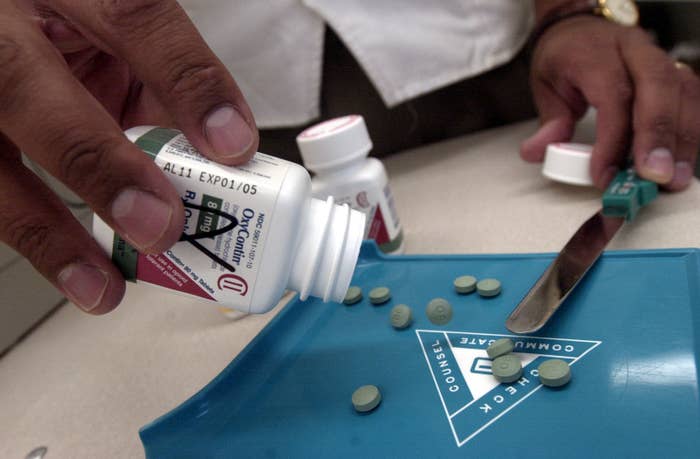
A prestigious medical journal is warning readers about an influential 1980 paper that wrongly suggested opioid painkillers aren’t addictive.
The paper, a letter of just five sentences published in the New England Journal of Medicine, has been cited 608 times in the medical literature. About 80% of the time, the journal now reports, the paper was “heavily and uncritically cited” to justify the use of these drugs.
These botched citations, researchers say, contributed to the current opioid epidemic, including the 183,000 fatal overdoses from prescription painkillers in the US between 1990 and 2015.
The paper helped “to shape a narrative that allayed prescribers’ concerns about the risk of addiction,” wrote the authors, led by David Juurlink of the Sunnybrook Research Institute in Toronto.
It was one of two deeply flawed, yet heavily cited medical studies in the 1980s that drove the current crisis, experts say. The other was a 1986 study of just 38 people in the journal Pain, which found opioids “safe, salutary and more humane” for treating back pain and spinal injuries in patients with no history of addiction. That paper was cited more than 500 times after its publication.
“Despite its low-quality evidence, the paper was widely cited to support expanded use of opioids,” Andrew Kolodny of Brandeis University and colleagues wrote in a 2015 review of how the opioid crisis exploded.
Both of these studies were trumpeted by executives at Purdue Pharmaceuticals, the makers of OxyContin. In the early 1990s, the company funded more than 20,000 doctor education programs to encourage them to start readily prescribing opioid painkillers, which for decades had been broadly discouraged in US medicine.
“Nobody would have paid any attention to these studies until the push for changes in prescribing practices,” Kolodny told BuzzFeed News. “They were important in the way they were dug up and cited by people who had never read them, becoming critical pieces of fake evidence for opioid advocates.”

The two 1980s studies were also used in a related campaign that aimed to increase treatment of chronic pain. The campaign was largely successful, leading many states to do away with older limits on opioid prescriptions. The American Pain Society launched the “Pain is the Fifth Vital Sign” campaign in 1995, and hospitals began adding pain treatment to their certification standards.
More suspect studies followed. In a review of the 16 clinical trials cited by Purdue in its 1995 application for FDA approval of OxyContin (nine of which were funded by the firm or other drug makers), the Washington Post found none warned of an addiction risk. Those results now look highly suspect because of recent independent research finding that almost half of people who take opioid painkillers for a month become hooked for a year.
Three Purdue executives later pled guilty to criminal charges of misleading doctors, patients, and health officials about their drug’s addictive potential, triggering a $600 million fine. But the damage had already been done.
All of the flogging of opioid painkillers resulted in about 300 million opioid painkiller prescriptions a year in 2015 (roughly 80% of the world supply), almost enough for every person in the US, 2.1 million people with substance use disorders tied to the drugs, and some 22,000 people that year dying from overdoses.
The New England Journal of Medicine should be commended for correcting the record, albeit nearly four decades later, pain specialist Mark Sullivan of the University of Washington told BuzzFeed News.
“The misquotation persisted because of the NEJM's prestige and the difficulty in the 1980's of easily locating the letter,” Sullivan wrote by email. Before journals went online, doctors would have had to get a paper copy of the journal at a medical school library to check claims made by painkiller advocates.
Sullivan headed a review of the opioid crisis in the same journal, Pain, that published the 1986 study, and called it part of a “failed experiment” that was tried out on the entire US population.
“We are now disentangling this web of untruths, mistakes, and short-sighted efforts at relief.”
